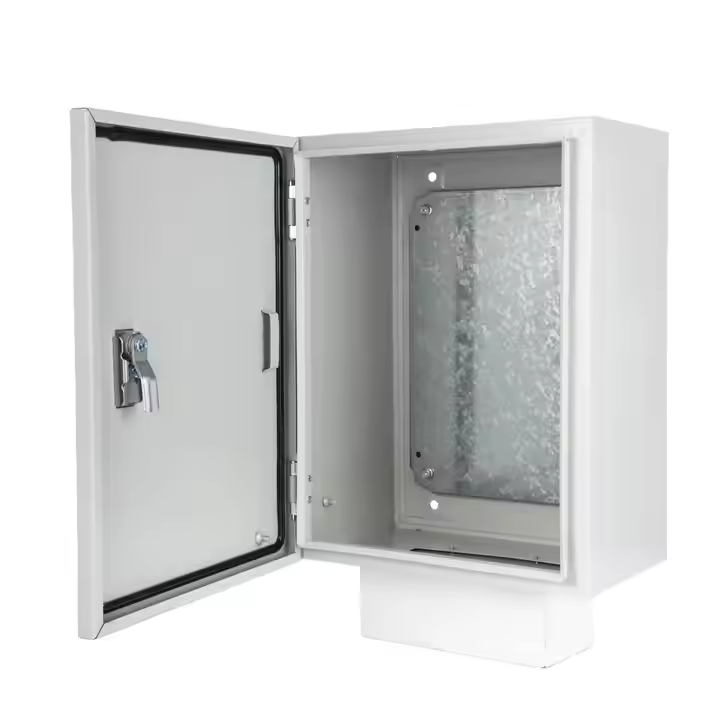NEMA Enclosure Box: Protecting Electrical Equipment Safely

Electrical systems power industries, businesses, and homes, but they also need protection from environmental hazards, accidental contact, and tampering. This is where NEMA Enclosure boxes come into play. These enclosures safeguard electrical equipment by providing a durable and standardized housing that ensures safety, reliability, and compliance with industry regulations.
In this article, we’ll explore what NEMA enclosure boxes are, why they are important, the different types available, their benefits, applications, and how to choose the right one.
What Is a NEMA Enclosure Box?
A NEMA enclosure box is a protective casing designed to house electrical components, such as switches, circuit breakers, control panels, and wiring systems.
The National Electrical Manufacturers Association (NEMA) developed a standardized rating system that classifies these enclosures based on their ability to withstand environmental factors like dust, water, oil, and corrosion.
NEMA enclosure boxes are not only about physical protection—they also provide safety by preventing accidental contact with live electrical parts, reducing the risk of shocks or equipment damage.
Why NEMA Ratings Matter
The key feature of any NEMA enclosure is its rating, which indicates the level of protection it offers. For example:
- NEMA 1: Provides basic protection against dust and accidental contact in indoor environments.
- NEMA 3R: Protects against rain, sleet, and external ice formation—commonly used outdoors.
- NEMA 4 and 4X: Waterproof and resistant to corrosion, making them suitable for washdown areas or marine environments.
- NEMA 12: Protects against dust, dirt, and dripping non-corrosive liquids, widely used in manufacturing plants.
These ratings make it easy to match enclosure boxes to the specific needs of different industries.
Importance of Using NEMA Enclosure Boxes
1. Safety
Electrical hazards can lead to injuries, fires, or even fatalities. NEMA enclosures minimize risks by creating a barrier between live electrical parts and people.
2. Equipment Longevity
Exposure to moisture, dust, or corrosive elements can shorten the life of electrical equipment. Enclosures extend equipment durability by shielding it from harsh conditions.
3. Regulatory Compliance
Many industries must comply with safety codes such as NFPA 70 (National Electrical Code). NEMA-rated enclosures help ensure compliance and reduce liability risks.
4. Operational Reliability
Downtime caused by equipment failure can be costly. By protecting sensitive devices, NEMA boxes keep systems running smoothly and reduce maintenance costs.
Materials Used in NEMA Enclosure Boxes
The performance of an enclosure depends heavily on the material it’s made of. Common materials include:
- Steel: Provides strong mechanical protection and is often powder-coated for corrosion resistance.
- Stainless Steel: Highly resistant to corrosion, ideal for food processing and marine applications.
- Aluminum: Lightweight yet durable, offering resistance to rust and easier handling.
- Fiberglass-Reinforced Polyester (FRP): Non-metallic, corrosion-resistant, and lightweight, great for chemical plants.
- Polycarbonate and Plastic: Affordable and lightweight, suitable for indoor or light-duty outdoor applications.
Choosing the right material depends on the operating environment and the type of hazards present.
Common Applications of NEMA Enclosure Boxes
NEMA enclosures are found across a wide range of industries and environments:
- Industrial Facilities: Protect control panels, motor starters, and PLCs from dust and moisture.
- Outdoor Utilities: Enclosures safeguard transformers, switches, and communication equipment against rain and vandalism.
- Food and Beverage Processing: NEMA 4X stainless steel enclosures withstand frequent washdowns and prevent contamination.
- Oil and Gas: Corrosion-resistant boxes secure sensitive electrical equipment in harsh offshore or refinery conditions.
- Renewable Energy: Solar inverters and wind turbine systems rely on NEMA enclosures to protect electronic controls.
- Residential and Commercial Buildings: Used for electrical panels, HVAC controls, and networking equipment.
Factors to Consider When Choosing a NEMA Enclosure Box
Selecting the right enclosure involves evaluating the application and environment. Some key factors include:
1. Environment
Will the enclosure be used indoors, outdoors, or in extreme conditions? For outdoor use, at least NEMA 3R is recommended, while washdown areas may need NEMA 4X.
2. Protection Level
Consider whether you need protection against dust, water, oil, corrosion, or all of them.
3. Size and Space
Ensure the enclosure is large enough to house all components with room for wiring, ventilation, and potential future expansion.
4. Material Selection
Match the enclosure material with environmental conditions—for instance, stainless steel in marine applications or plastic for indoor low-cost setups.
5. Accessibility
Choose between hinged doors, screw covers, or transparent windows depending on the level of access and monitoring required.
6. Compliance
Always verify that the enclosure meets local codes, NEMA standards, and, if applicable, international standards like IEC 60529 (IP ratings).
NEMA Enclosures vs. IP Ratings
While NEMA is widely used in North America, many global markets rely on the Ingress Protection (IP) rating system. Both serve the same purpose—defining enclosure protection levels.
For example:
- NEMA 4X is roughly equivalent to IP66, meaning it’s dust-tight and resistant to powerful water jets.
- NEMA 12 is similar to IP52, protecting against dust and dripping liquids.
Understanding both systems helps companies operating internationally ensure proper equipment protection.
Benefits of Using NEMA Enclosure Boxes
- Enhanced Safety: Reduces risks of electrical shocks and fire hazards.
- Durability: Protects equipment from environmental wear and tear.
- Cost Savings: Minimizes downtime, repairs, and replacement costs.
- Versatility: Available in multiple designs, sizes, and materials to suit various applications.
- Peace of Mind: Ensures compliance with industry standards and keeps operations safe and reliable.
Installation and Maintenance Tips
Installation Best Practices
- Mount enclosures securely to avoid vibration and mechanical damage.
- Ensure proper grounding to reduce electrical hazards.
- Use weatherproof seals and fittings for outdoor installations.
Maintenance Guidelines
- Inspect regularly for cracks, corrosion, or loose seals.
- Clean enclosures to prevent buildup of dust and contaminants.
- Replace damaged gaskets to maintain water- and dust-proofing.
- Verify that enclosure doors and locks operate smoothly.
Proactive maintenance extends both enclosure and equipment lifespan.
Future of NEMA Enclosure Boxes
With the rise of smart manufacturing, renewable energy, and IoT systems, enclosures are evolving too. Future trends include:
- Smart Enclosures with built-in sensors for monitoring temperature, humidity, and intrusion.
- Lightweight Composite Materials for easier installation and transport.
- Sustainable Designs using eco-friendly materials and coatings.
- Modular Systems that allow customization and expansion as technology advances.
These innovations will make NEMA enclosures even more vital for protecting modern electrical infrastructure.
Conclusion
A NEMA enclosure box is more than just a protective shell—it’s a safeguard for electrical systems that ensures safety, reliability, and compliance. Whether used in industrial facilities, outdoor utilities, or residential setups, these enclosures provide essential defense against environmental hazards and accidental contact.
By understanding NEMA ratings, choosing the right materials, and following best practices for installation and maintenance, businesses and homeowners can keep their electrical equipment safe for years to come.
When it comes to protecting electrical equipment, investing in the right NEMA enclosure box is not just a smart choice—it’s a necessity.




